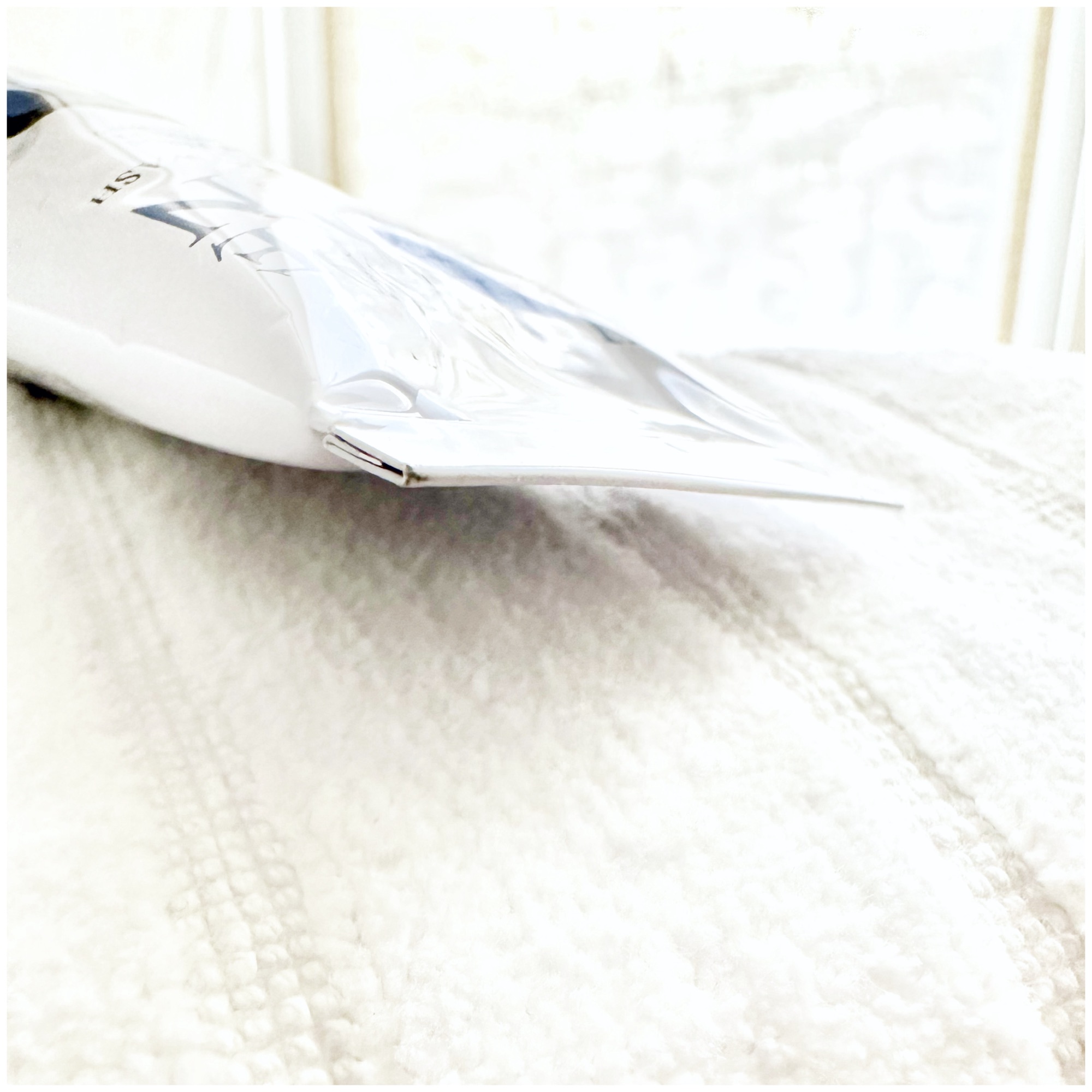Allergen
Shoes
So many types of footwear (sandals, pumps, boots, sneakers, water socks, etc.) have so many top contact allergens that most would be considered prime suspects behind skin problems on the feet. Some of the more common culprits include:
- Rubber (and therefore thiuram)
- Dyes and paraphenylenediamine (PPD)
- Leather
- Formaldehyde (in preservatives but also in some leather processing)
- Dimethyl fumarate (DMF — the stuff in sachets that prevents mold growth): while normally just in shoe boxes or surrounding plastic, this powerful allergen can permeate the shoe material
- Glues and colophony or rosin
- Preservatives
- Metal parts and chromates (used in some leather tanning; sweat causes them to leach out of the shoe material and come into more direct contact with skin)
- Elastics
- Carba mix, which contains the fungicides and pesticides diphenylguanidine, zincdibutyldithiocarbamate, and zincdiethyldithiocarbamate, which are also used in the manufacturing of rubber products
- Acetophenone azine (found in some shoe soles)
Keep in mind that wearing shoes often means an enclosed, hot, humid environment for hours at a time, especially during physical exertion. This can increase the likelihood of contact allergies or worsen existing ones. It can also be an ideal environment for microbes to flourish. In fact, shoe contact dermatitis can be difficult to diagnose because so many other things can be at play, such as fungal or bacterial infections, warts (viral), irritant contact dermatitis due to friction and exposure to sweat, contact dermatitis to soaps, sock fabric, or lotions, etc. The quantity of possible factors and diagnoses is another reason why patch testing is so important.
What does shoe contact dermatitis often look like? It can be as subtle as constant dryness or flaking. It can be more severe with any (or a combination of) the following: itching, redness, swelling, blisters, burning, and pain. It can result in cracks in the feet and barrier defect which (encouraged further by the sweaty, enclosed conditions) can be very welcoming to opportunistic microbes and increase the risk for more types of infection.
These problems tend to start on the areas of most contact, such as the big toe, and spread to the top of the foot. It can occur all over the feet and soles, and even spread to the lower legs. “Never being allergic before” doesn’t mean much in contact dermatitis: you can develop the allergy over time as the skin is regularly exposed to allergens in the shoe whether or not they were problems before.
What can help?
- Get a patch test so you’re not guessing — shoes can be costly so you want to be clear about what materials you can use (for example, you might be fine with vegetable-tanned leather).
- Use socks but without your allergens. There are some latex, elastic-free, dye-free socks with organic cotton (check out Cottonique.com).
- A purely mineral, non-comedogenic barrier-protective product like Stay-On-Point! or Armada Baby or Post-Procedure may also help to minimize contact between skin and shoes.
- Wash your feet with allergen-free body wash or soap. Importantly, most VMV Hypoallergenics products also contain coconut-derived monolaurin, a non-allergenic, microbiota-friendly broad-spectrum antimicrobial to help with the wide range of possible infections.
- Before putting on your socks or shoes, try this great technique for sweat and microbial control: spray your feet with Essence Skin-Saving Antiperspirant or Essence Stay Fresh-ener (in the USA) then massage Id Monolaurin Gel or Kid Gloves all over your feet. Both can be reapplied as needed. TOP TIP: spray Essence Antiperspirant or Stay Fresh-ener again right before bed for better absorption into the sweat pores!
- For barrier repair of irritated skin and microbiome balance, massage Know-It-Oil or Oil’s Well liberally all over feet before bed.
- Don’t store your shoes in enclosed containers. Definitely don’t keep DMF sachets in your shoes or in a box or bag where your shoes are stored. Air out your shoes frequently and keep them stored on shelves (they tend to get better air circulation than a closet).
Subscribe to VMVinSKIN.com and our YouTube channel for more hypoallergenic tips and helpful “skinformation”!
If you have a history of sensitive skin…
…don’t guess! Random trial and error can cause more damage. Ask your dermatologist about a patch test.
To shop our selection of hypoallergenic products, visit vmvhypoallergenics.com. Need help? Ask us in the comments section below, or for more privacy (such as when asking us to customize recommendations for you based on your patch test results) contact us by email, or drop us a private message on Facebook.
For more:
- On the prevalence of skin allergies, see Skin Allergies Are More Common Than Ever.
- For the difference between irritant and allergic reactions, see It’s Complicated: Allergic Versus Irritant Reaction.
- For the difference between food, skin, and other types of reactions: see Skin & Food Allergies Are Not The Same Thing.
- On the differences between hypoallergenic, natural, and organic, check out Is Natural Hypoallergenic? and this video in our YouTube channel.
- To learn about the VH-Rating System and hypoallergenicity: What Is The Validated Hypoallergenic Rating System?
Main References:
Regularly published reports on the most common allergens by the North American Contact Dermatitis Group and European Surveillance System on Contact Allergies (based on over 28,000 patch test results, combined), plus other studies. Remember, we are all individuals — just because an ingredient is not on the most common allergen lists does not mean you cannot be sensitive to it, or that it will not become an allergen. These references, being based on so many patch test results, are a good basis but it is always best to get a patch test yourself.
- DeKoven JG, Silverberg JI, Warshaw EM, Atwater AR, et al. North American Contact Dermatitis Group Patch Test Results: 2017-2018. Dermatitis. 2021 Mar-Apr 01;32(2):111-123.
- DeKoven JG, Warshaw EM, Zug KA, et al. North American Contact Dermatitis Group Patch Test Results: 2015-2016. Dermatitis. 2018 Nov/Dec;29(6):297-309.
- DeKoven JG, Warshaw EM, Belsito DV, et al. North American Contact Dermatitis Group Patch Test Results 2013-2014. Dermatitis. 2017 Jan/Feb;28(1):33-46.
- Warshaw, E.M., Maibach, H.I., Taylor, J.S., et al. North American contact dermatitis group patch test results: 2011-2012. Dermatitis. 2015; 26: 49-59.
- W Uter et al. The European Baseline Series in 10 European Countries, 2005/2006–Results of the European Surveillance System on Contact Allergies (ESSCA). Contact Dermatitis 61 (1), 31-38.7 2009.
- Wetter, DA et al. Results of patch testing to personal care product allergens in a standard series and a supplemental cosmetic series: An analysis of 945 patients from the Mayo Clinic Contact Dermatitis Group, 2000-2007. J Am Acad Dermatol. 2010 Nov;63(5):789-98.
- Warshaw EM, Buonomo M, DeKoven JG, et al. Importance of Supplemental Patch Testing Beyond a Screening Series for Patients With Dermatitis: The North American Contact Dermatitis Group Experience. JAMA Dermatol. 2021 Dec 1;157(12):1456-1465.
- Verallo-Rowell VM. The validated hypoallergenic cosmetics rating system: its 30-year evolution and effect on the prevalence of cosmetic reactions. Dermatitis 2011 Apr; 22(2):80-97.
- Ruby Pawankar et al. World Health Organization. White Book on Allergy 2011-2012 Executive Summary.
- Misery L et al. Sensitive skin in the American population: prevalence, clinical data, and role of the dermatologist. Int J Dermatol. 2011 Aug;50(8):961-7.
- Warshaw EM1, Maibach HI, Taylor JS, Sasseville D, DeKoven JG, Zirwas MJ, Fransway AF, Mathias CG, Zug KA, DeLeo VA, Fowler JF Jr, Marks JG, Pratt MD, Storrs FJ, Belsito DV. North American contact dermatitis group patch test results: 2011-2012.Dermatitis. 2015 Jan-Feb;26(1):49-59.
- Warshaw, E et al. Allergic patch test reactions associated with cosmetics: Retrospective analysis of cross-sectional data from the North American Contact Dermatitis Group, 2001-2004. J AmAcadDermatol 2009;60:23-38.
- Foliaki S et al. Antibiotic use in infancy and symptoms of asthma, rhinoconjunctivitis, and eczema in children 6 and 7 years old: International Study of Asthma and Allergies in Childhood Phase III. J Allergy Clin Immunol. 2009 Nov;124(5):982-9.
- Kei EF et al. Role of the gut microbiota in defining human health. Expert Rev Anti Infect Ther. 2010 Apr; 8(4): 435–454.
- Thavagnanam S et al. A meta-analysis of the association between Caesarean section and childhood asthma. Clin Exp Allergy. 2008;38(4):629–633.
- Marks JG, Belsito DV, DeLeo VA, et al. North American Contact Dermatitis Group patch-test results, 1998 to 2000. Am J Contact Dermat. 2003;14(2):59-62.
- Warshaw EM, Belsito DV, Taylor JS, et al. North American Contact Dermatitis Group patch test results: 2009 to 2010. Dermatitis. 2013;24(2):50-99.
- Verallo-Rowell V. M, Katalbas S.S. & Pangasinan J. P. Natural (Mineral, Vegetable, Coconut, Essential) Oils and Contact Dermatitis. Curr Allergy Asthma Rep 16,51 (2016) . https://doi.org/10.1007/s11882-016-0630-9.
- Park G, Oh DS, Lee MG, Lee CE, Kim YU. 6-Shogaol, an active compound of ginger, alleviates allergic dermatitis-like skin lesions via cytokine inhibition by activating the Nrf2 pathway. Toxicol Appl Pharmacol. 2016 Nov 1;310:51-59. doi: 10.1016/j.taap.2016.08.019. Epub 2016 Aug 22. PMID: 27562088.
- de Groot AC. Monographs in Contact Allergy, Volume II – Fragrances and Essential Oils. Boca Raton, FL: CRC Press Taylor & Francis Group; 2019.
- De Groot AC. Monographs in Contact Allergy Volume I. Non-Fragrance Allergens in Cosmetics (Part I and Part 2). Boca Raton, Fl, USA: CRC Press Taylor and Francis Group, 2018.
- Zhu TH, Suresh R, Warshaw E, et al. The Medical Necessity of Comprehensive Patch Testing. Dermatitis. 2018 May/Jun;29(3):107-111.
Want more great information on contact dermatitis? Check out the American Contact Dermatitis Society, Dermnet New Zealand, the Contact Dermatitis Institute, and your country’s contact dermatitis association.

Laura is our “dew”-good CEO at VMV Hypoallergenics and eldest daughter of VMV’s founding dermatologist-dermatopathologist. She has two children, Madison and Gavin, and works at VMV with her sister CC and husband Juan Pablo (Madison and Gavin frequently volunteer their “usage testing” services). In addition to saving the world’s skin, Laura is passionate about health, inclusion, cultural theory, human rights, happiness, and spreading (like a VMV cream!) goodness!







